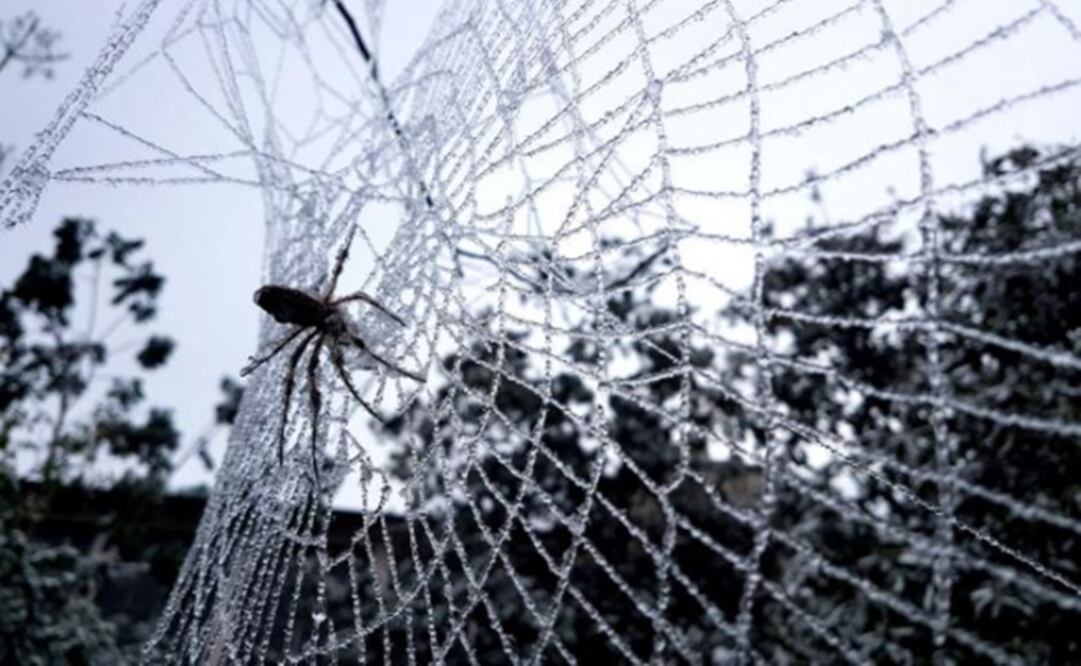Más Información

Hombres armados levantan a tiktoker Nicholette Pardo en Culiacán, Sinaloa; fue interceptada cuando llegaba a uno de sus negocios

Van 92 criminales “de alto impacto” trasladados de México a EU tras tercera entrega; esta es la lista

"La Chayo", la narco proveedora de armas del CJNG; la única mujer entre los capos enviados a EU acusados de narcoterrorismo

Quién es "H4", el heredero de los Beltrán Leyva; el hijo del capo “H2” que terminó extraditado a Nueva York
The Chilean recluse , one of the larger species of recluse spiders, has six eyes arranged in pairs (dyads) with one median pair and two lateral pairs, unlike most spiders which have eight eyes. It is brown and usually, it has markings on the dorsal side of its thorax , with a black line coming from it that looks like a violin with the neck of the violin pointing to the rear of the spider.
The" fiddleback spide r" or " violin spider " takes refuge in dark corners and prefers to hunt at night, thus its activity goes unnoticed between the shadows.
The genus Loxosceles hosts 133 species of spiders, and at least 36 inhabit in our country, thus Mexico is recognized as the most diverse country on this particular arachnid genus.
Researcher Alejandro Valdéz Mondragón , H ead of the Laboratory of Arachnology ( Latlax ) of the Regional Laboratory of Biodiversity and Cultivation of Vegetable Tissues at the Institute of Biology of the National Autonomous University of Mexico ( UNAM ) in the state of Tlaxcala , assures that most people associate arachnids with spiders, yet arachnids encompass 11 groups in different orders, being mites the most diverse, followed by spiders .
Founded in 2016 , the main objective of Latlax was to study the composition and diversity of the arachnid fauna on a regional level. Regarding spiders, Alejandro Valdéz highlights that out of the 2,500 species inhabiting our country, only 40 are dangerous , 36 of them fiddleback spiders .
Thus, one of the main projects carried out by Latlax is to broaden the existing knowledge of Loxosceles . Currently, the research is being supported by the National Council of Science and Technology ( Conacyt ) aimed to a three-year investigation, yet Latlax seeks to extend it for six years.
"Compared to black widows, Chilean recluse's venom is more aggressive. A single bite may lead to severe skin necrosis , called cutaneous loxoscelism , destruction of soft tissue or skin death . In severe cases, it may result in kidney , intestine , and liver damage or even death ," Alejandro Valdéz explains.
Several native Loxosceles inhabit the central zone of the country, yet there are species that are still being introduced, such as the Mixtec Loxosceles which has been inhabiting Mexico City for over ten years.
The main objective of his project is to make a taxonomic revision of the group. Currently, Latlax is analyzing a new Loxosceles species from central Mexico , located in a warm zone of the lower jungle of Puebla .
It should be noted that there are over 100,000 species of arachnids which have been studied and analyzed in the world and around 5% of this figure is set in Mexico alone, being one of the six countries with the greatest diversity of spiders worldwide.
According to the researcher, Baja California has the greatest diversity in the country with nine species.
Unfortunately, arachnids are little studied in the country and the community of arachnologists in Mexico remains very small, concludes the researcher.
sg
Noticias según tus intereses
[Publicidad]
[Publicidad]










